
7 Valuable Tips for Effective B2B Ad Design in 2024
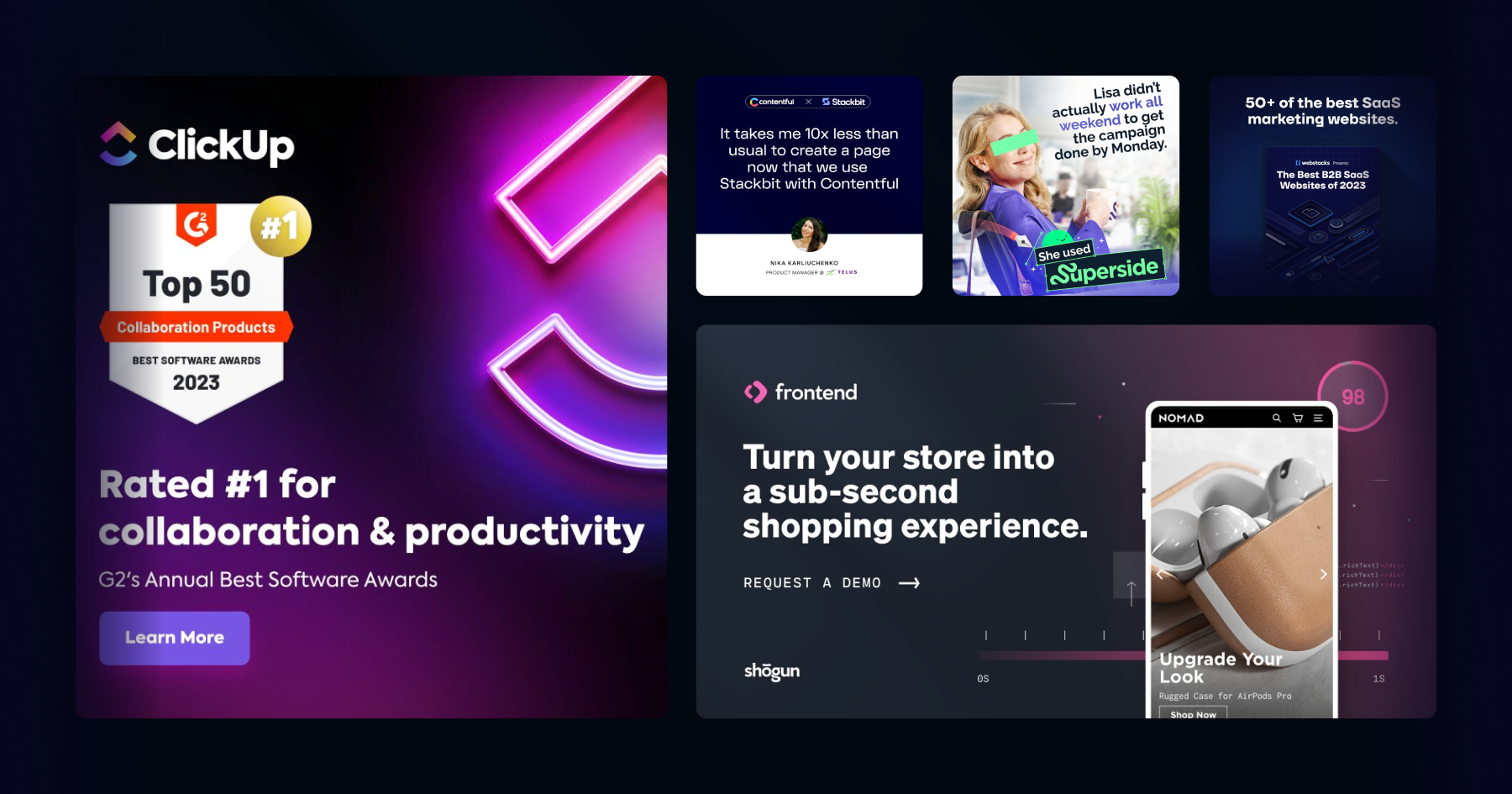
1. Devise a Campaign Strategy
Brand Awareness:
Product Marketing:
Events Promotion:
2. Follow A Consistent Visual Identity
3. Experiment with 3D Design, Animations, and Video
4. Make Your CTA Clear and Intriguing
5. Design For Mobile Users
6. Use Proper Ad Sizing For Each Platform
Optimal Ad Design Sizes
7. Implement A/B Testing and Personalization
Roundup
Is it time to reevaluate your B2B ads’ design?
Ads can certainly be tough to manage. From ideation to creation, analyzing performance, and making adjustments - there are so many interconnected parts to account for.
Today, we are going to focus on one of the most fundamental aspects of online advertising - the creative.
While not every ad needs to be a scroll-stopping masterpiece, there are several best practices that can dramatically enhance the appearance (and subsequently the performance) of your paid media.
Without further ado, we share our top tips for creating a more effective ad in B2B.
1. Devise a Campaign Strategy
Let’s start by getting aligned on the foundation of a paid ad campaign.
Before diving into the creative process, it's crucial to define your strategy.
A well-defined strategy serves as a roadmap, and will guide your design choices.
Understand your target audience, their pain points, and the unique selling propositions of organization. Then identify clear objectives, whether it's brand awareness, event sign-ups, lead generation, or direct sales.
Consider the buyer's journey, crafting ads that resonate at every stage. By aligning your design with your campaign goals, you ensure your B2B ads are not just visually appealing but also purposeful, driving meaningful engagement and conversions.
If you are starting from square one, here are some common B2B marketing objectives, and related frameworks for ads:
Brand Awareness:
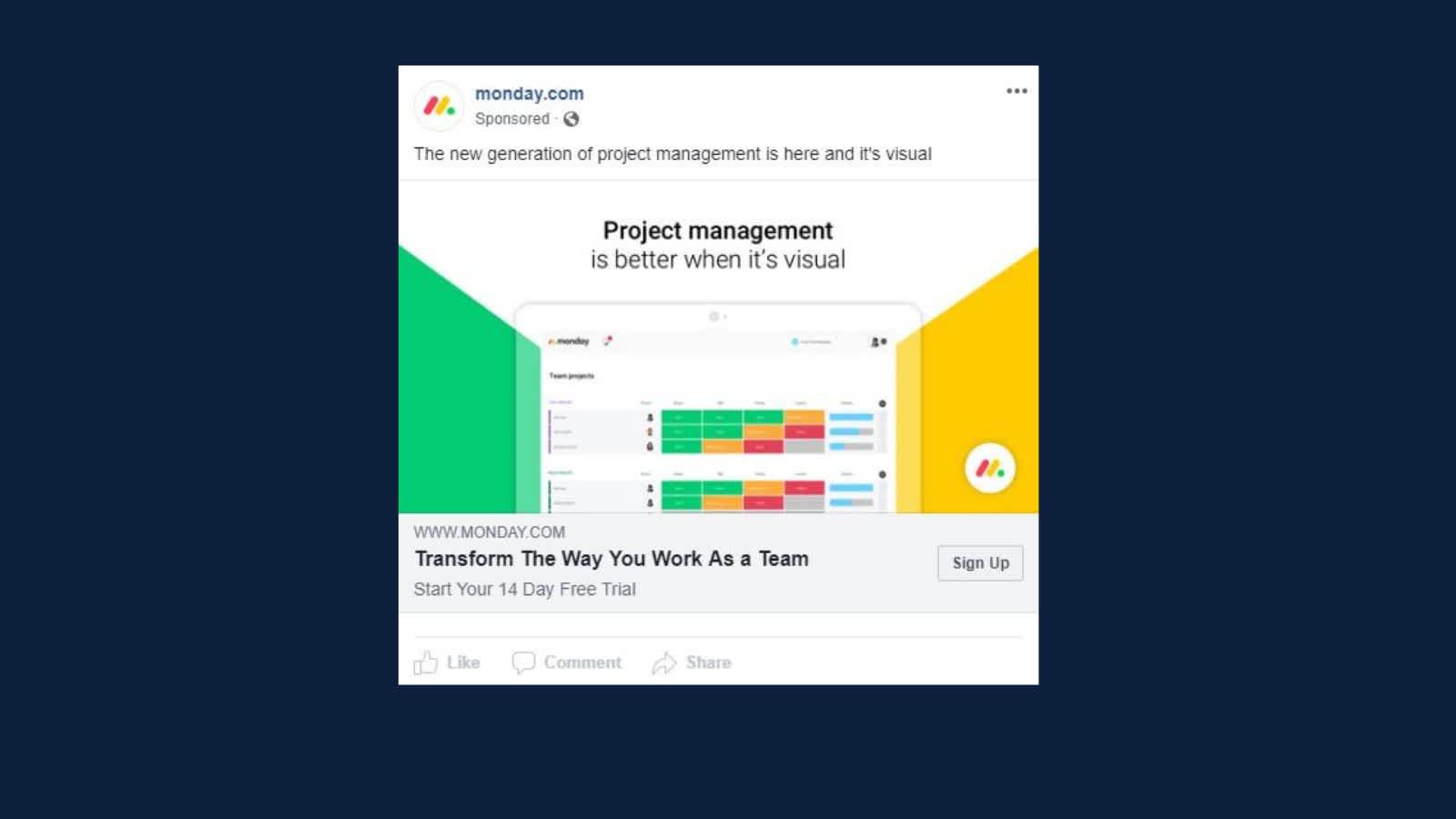
Brand Storytelling: Share your mission or the products and solutions that make up your organization.
Thought Leadership: Share eBooks, whitepapers, reports, and other content that exhibits your organization’s expertise within your industry.
Success Stories: Showcase testimonials, case studies, and other results from your products.
Product Marketing:
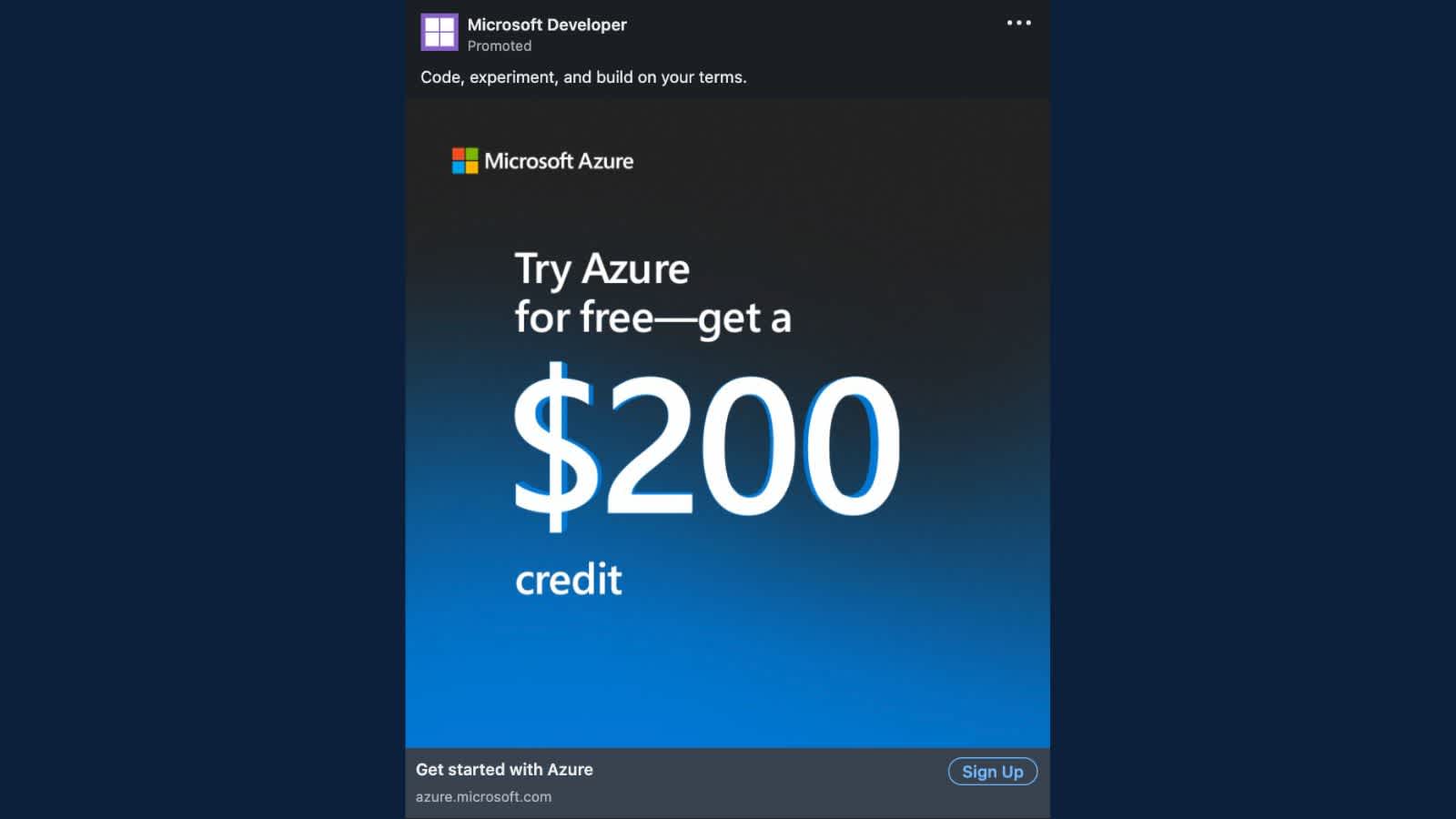
Limited-Time Offers: Run time-sensitive promotions on specific products or services.
Product Demos: Use video to showcase your B2B product in action, highlighting key features, solutions, and functionality.
Events Promotion:
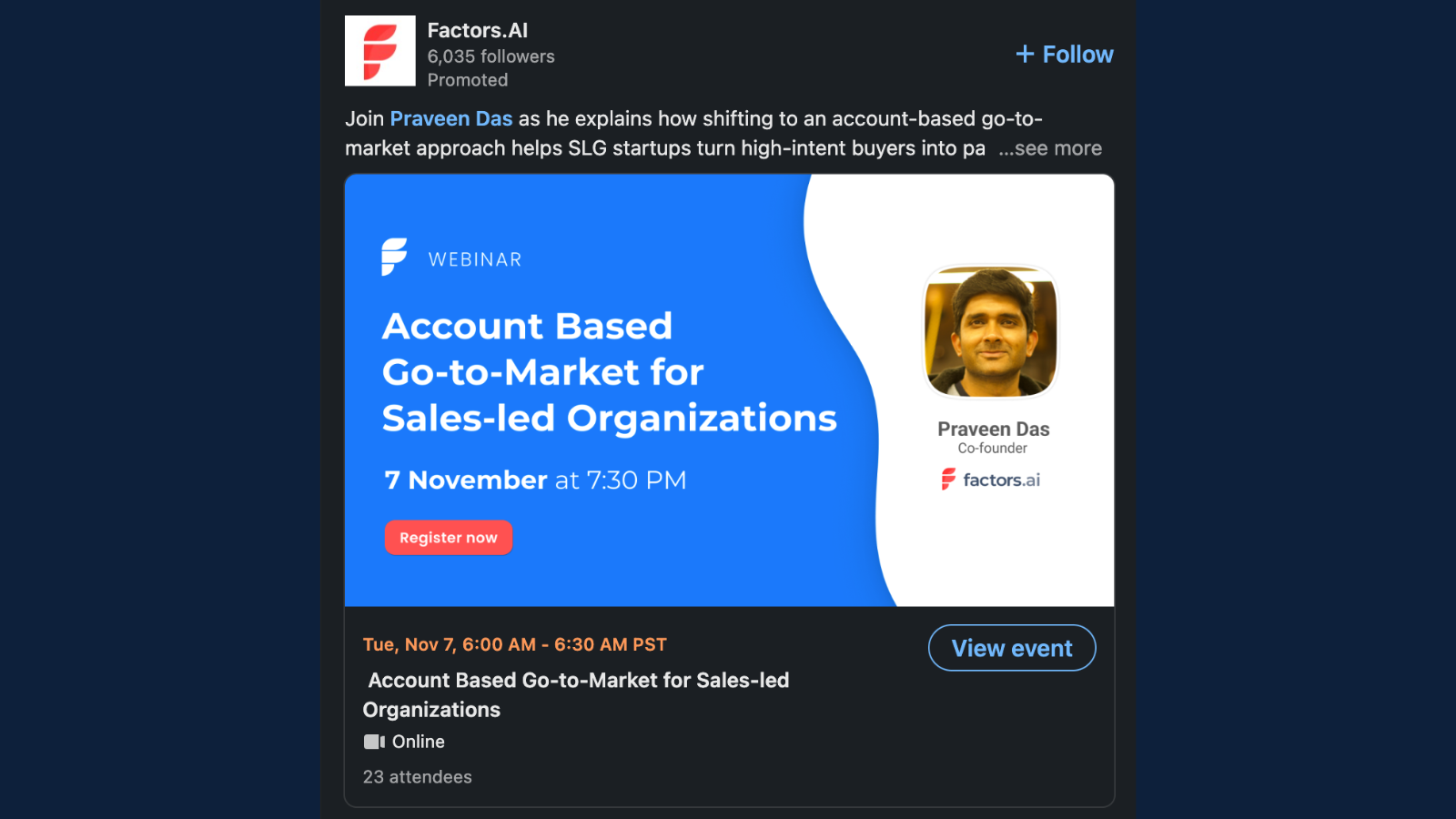
Event Countdown: Create countdown ads leading up to the event to generate excitement and anticipation. Include event details and a clear call-to-action (CTA) for registration or ticket purchase.
Speaker Highlights: Showcase key speakers or presenters along with their credentials and topics they'll cover. Highlighting influential speakers can attract attendees.
2. Follow A Consistent Visual Identity
Consistency is key in B2B ad design.
Firstly, all of your colors, typographies, and imagery should be derived from your brand’s visual identity system. In doing so, your ads will blend seamlessly with your content across other channels, like your website and social media. Moreover, it will make it seem more like an organic post than a promoted advertisement.

This unified visual language instills trust and professionalism, and reinforces brand recognition.
3. Experiment with 3D Design, Animations, and Video

Don’t limit your ad creative to traditional, one dimensional design. There are plenty of ways to make your ads stand out amongst the clutter and genuinely intrigue your users.
3D Design - 3D graphics and illustrations can be exponentially more enticing than 2D ones. Especially when you have such limited real estate in ads, it's critical to make your designs interesting enough so users stop scrolling and take notice.
Animations - Capture users’ attention with animations, more specifically explainer videos. Many top B2B brands have 60 seconds promotional explainer animations that provide a high-level overview of their company and the problems they solve.
Video - Videos can also include product demos, customer testimonials, or interviews with stakeholders. While video is exponentially more engaging than video, it doesn't come without its drawbacks. Video ads can cost a lot more to produce. Furthermore, it can be a real challenge to capture a user’s attention, and keep them around until the very end of the ad.
4. Make Your CTA Clear and Intriguing
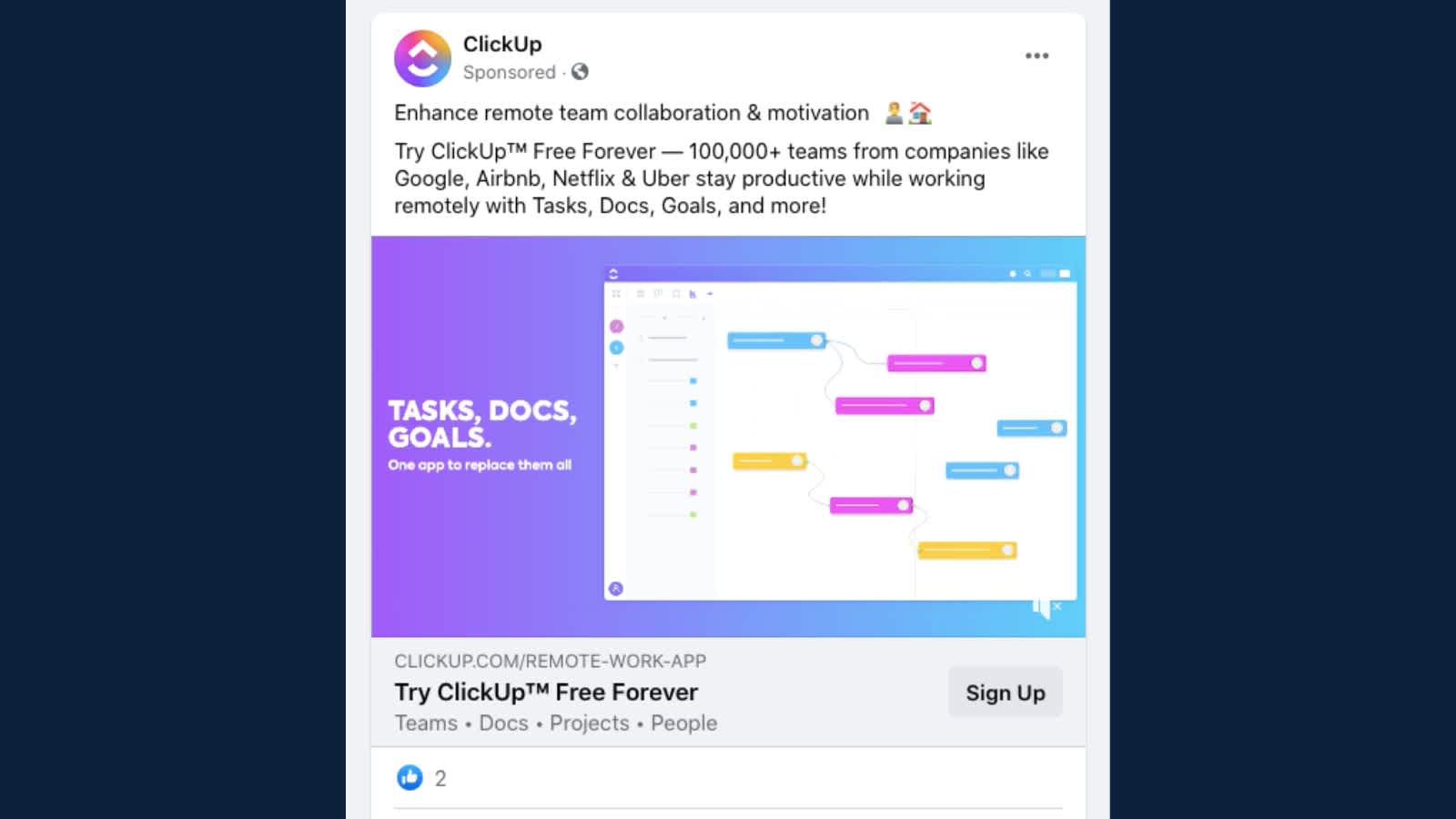
Your ad could be informative and engaging, but if the CTA doesn’t match your design, none of that matters.
Compelling Calls to Action (CTAs) are the driving force behind B2B ad conversions. Craft concise, action-oriented CTAs that clearly convey the desired outcome.
Use action-oriented language that prompts a response, whether it's "Request a Demo," "Get Started Today," or "Explore Our Solutions." A well-designed CTA stands out visually, using contrasting colors and clear typography to draw attention. Ensure your CTA aligns with the ad's objective, guiding prospects seamlessly from interest to action, and ultimately, conversion.
5. Design For Mobile Users
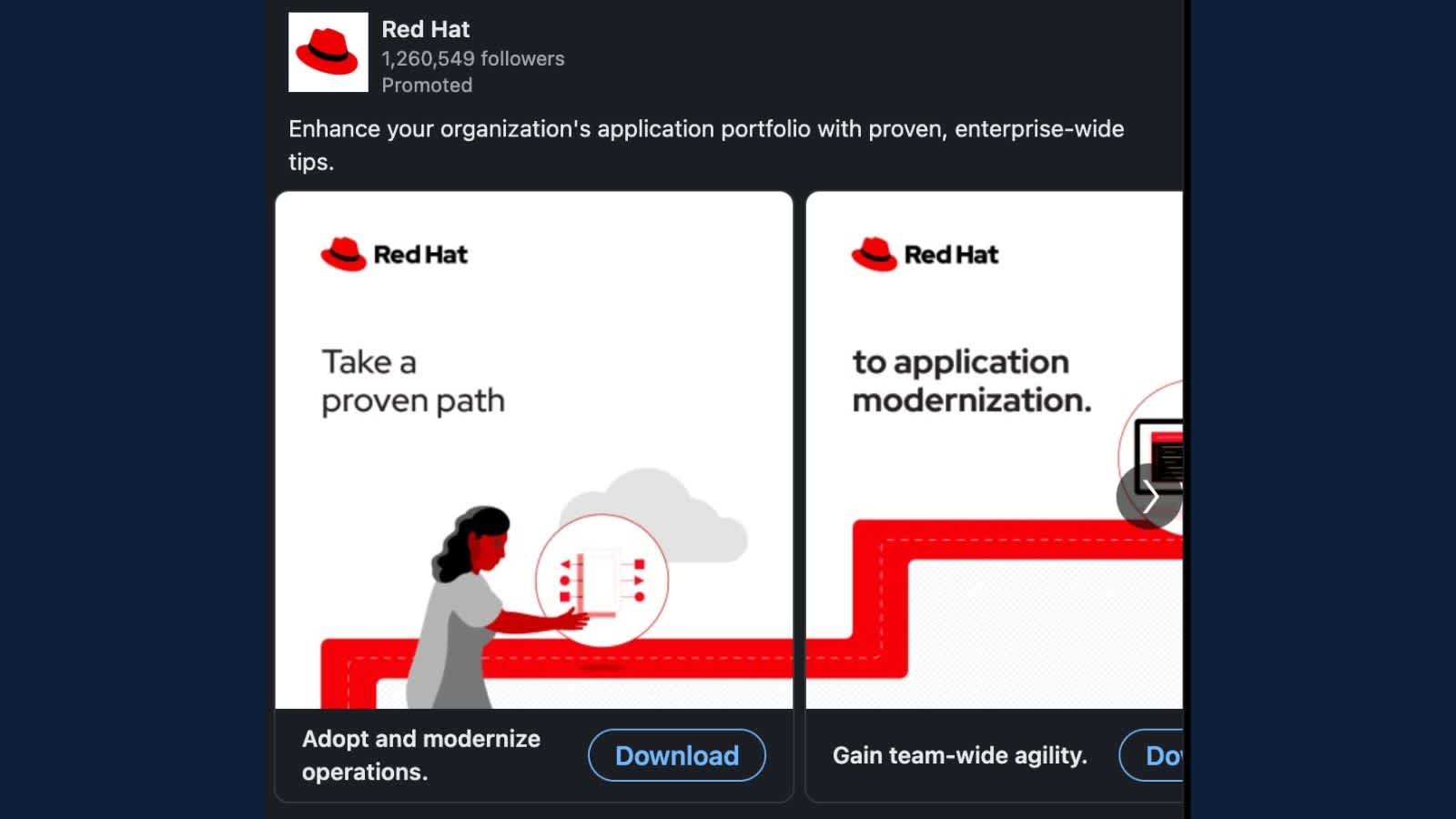
Mobile optimization is non-negotiable in today's digital landscape. Optimize your ad designs for various mobile devices, ensuring seamless user experience across different screen sizes.
Use responsive design techniques, prioritize essential information, and streamline visuals for smaller screens. Mobile-friendly B2B ads not only cater to a broader audience but also enhance user satisfaction, improving the likelihood of interaction and conversion.
6. Use Proper Ad Sizing For Each Platform
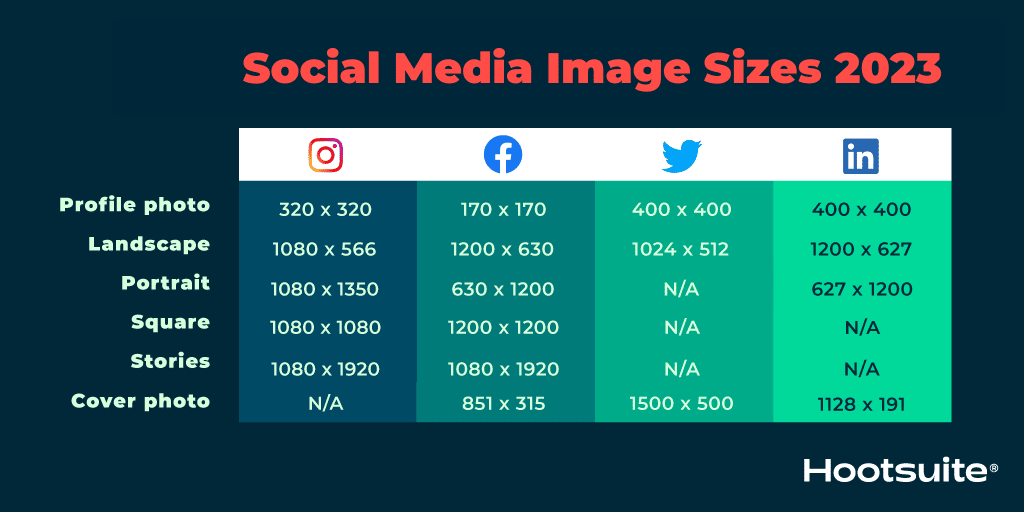
Different platforms have specific ad size requirements, and adhering to these guidelines is essential for effective B2B advertising. Tailor your designs to fit the designated dimensions, optimizing visuals and layout for each platform's specifications. Properly sized ads ensure they display correctly, preventing distortion or loss of essential content. By presenting your B2B ads in the best possible format, you enhance their visibility and impact, maximizing your reach and engagement.
Optimal Ad Design Sizes
Here’s a summary of the top performing ad sizes across each platform:
Google Ad Design Recommendations
Medium rectangle: 300x250
Large rectangle: 336x280
Leaderboard: 728x90
Half page: 300x600
Large mobile banner: 320x100
LinkedIn Ad Design Recommendations
Single Image Ads:
Horizontal / Landscape: 1.91:1 - 1200 x 628
Square: 1:1 - 1200 x 1200 pixels
Vertical (mobile only): 1:1.91 - 628 x 1200
Facebook Ad Design Recommendations
Feed and Carousel Ads: 1:1 - 1080 x 1080 pixel
Instagram Ad Design Recommendations
Single Image and Carousel Ads: 1:1 - 1080 × 1080
Video Posts: 1:1 - 600 x 600
Twitter / X Ad Design Recommendations
Image and Carousel Ads: 1.91:1 - 800 x 418 or 1:1 - 800 x 800
7. Implement A/B Testing and Personalization
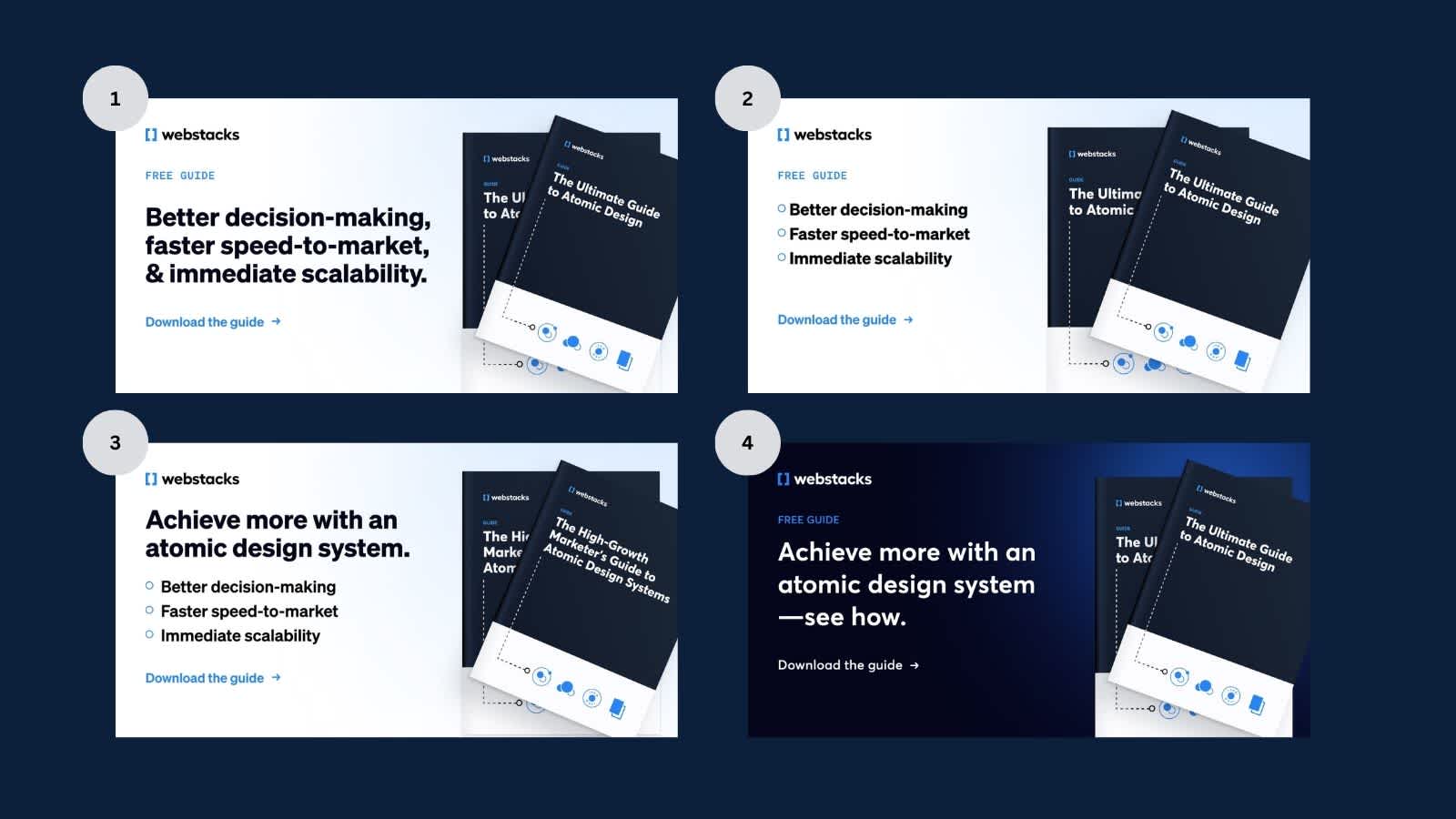
Be sure to design several variations of your ads. Make adjustments to the ad’s format, the supporting copy, and the CTA. Then, publish each and identify any significant differences in performance. This ensures your organization is getting the most out of its advertising spending.
Another powerful tool is designing with personalization in mind. Targeting very specific audiences can have dramatic effects on ad performance. Depending on the platform, you may be able to leverage user data like their location, company, industry, and more.
For example, LinkedIn’s Dynamic Ads automatically processes profile data, and creates tailored ads based on each individual profile photo, company name, and position title.
Roundup
We hope you found these insights valuable, and are able to find practical ways to implement some of them into your ad design and overall paid media strategy. Let’s review again all the tips we covered today:
Devise a campaign strategy
Follow a consistent visual identity
Experiment with 3D, animations, and video
Make your CTA clear and compelling
Design for mobile users
Use proper ad sizing for each platform
Implement A/B testing and personalization
Collectively, these ad design best practices can help ensure your B2B organization is making the most out of its impressions and display advertising budget.
Join our growing community of B2B experts and learn the ins and outs of building a world-class website.
1. Devise a Campaign Strategy
Brand Awareness:
Product Marketing:
Events Promotion:
2. Follow A Consistent Visual Identity
3. Experiment with 3D Design, Animations, and Video
4. Make Your CTA Clear and Intriguing
5. Design For Mobile Users
6. Use Proper Ad Sizing For Each Platform
Optimal Ad Design Sizes
7. Implement A/B Testing and Personalization
Roundup